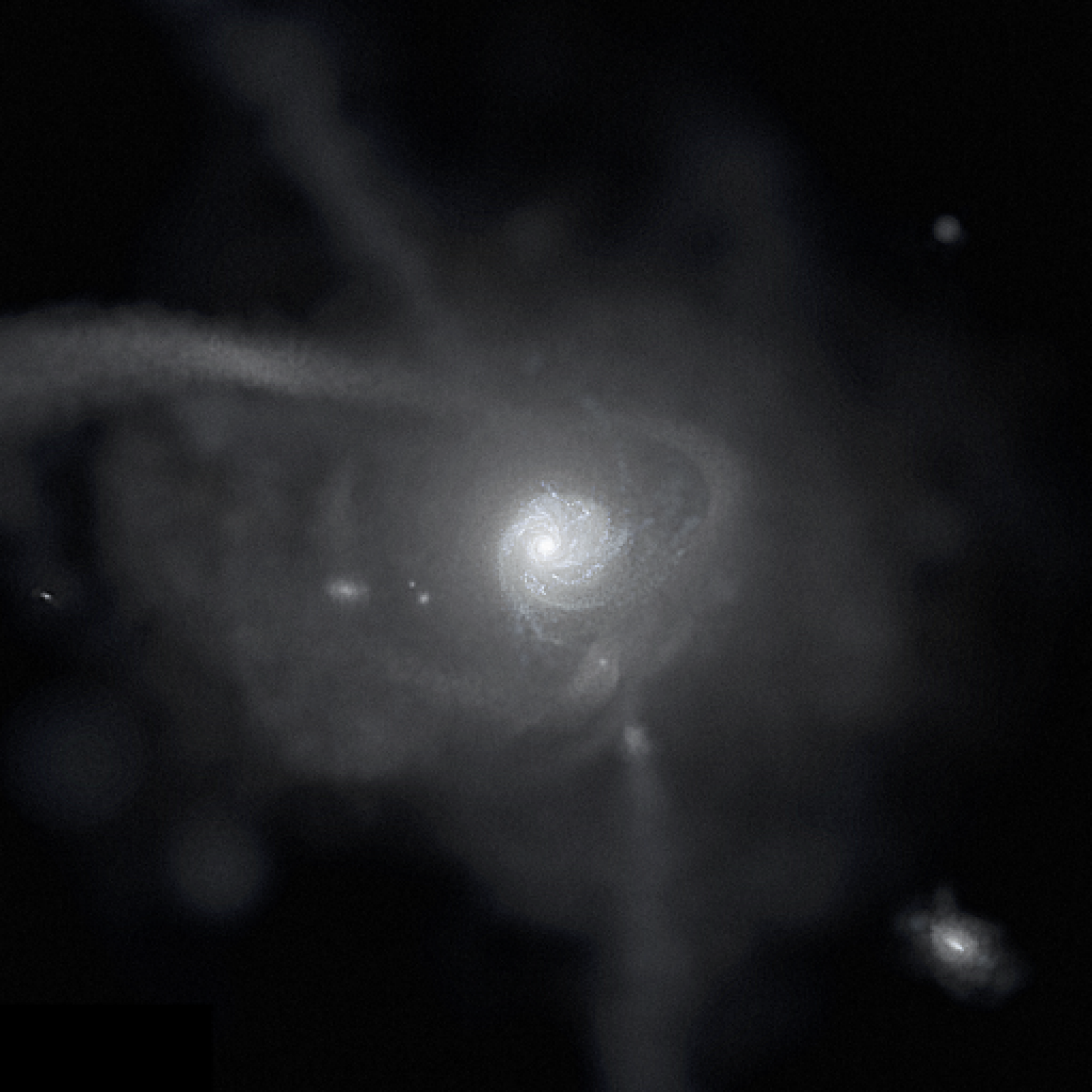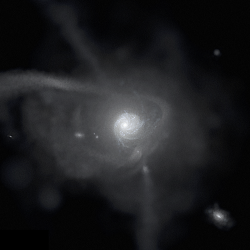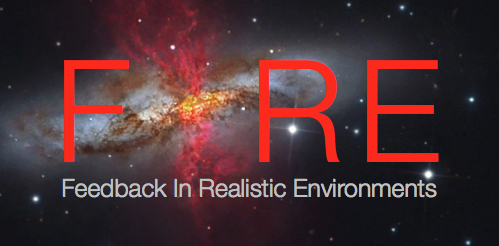UC Davis College of Letters & Science highlighted our recent research in their article: Simulations Explain Abundance of Bright Galaxies Observed at Cosmic Dawn. We showed how bursty star formation in our FIRE-2 simulations of galaxy formation naturally explains the abundance of bright galaxies in the early universe as the James Webb Space Telescope has observed.
public data release of the FIRE-2 simulations
Nearly all of our FIRE-2 cosmological zoom-in simulations of galaxy formation are now publicly available!
In Wetzel et al 2023, we describe this public data release (DR1) of the FIRE-2 simulations, available at flathub.flatironinstitute.org/fire. DR1 contains full snapshots from 46 different simulations, spanning massive to Milky Way-mass to ultra-faint galaxies, with up to 39 snapshots each across z = 0 to 10, as well as halo/galaxy catalogs, merger trees, formation coordiantes for each star particle, and additional data products. We provide a comprehensive description of the FIRE-2 simulations and data products, and we describe various publicly available python analysis packages to make reading and using these simulations easier.
This DR1 extends our initial data release (DR0) of a subset of FIRE-2 simulations, which contained complete snapshots of 3 of our Latte simulations of Milky Way-like galaxies at z = 0, accompanied by our Ananke synthetic Gaia DR2-like surveys that we created from these simulations (Sanderson et al 2020), which are available via yt Hub at ananke.hub.yt.
Sky & Telescope article: plane of satellites
Sky & Telescope highlighted our recent research in their article: The Alignment of the Milky Way’s Entourage, Explained. PhD student Jenna Samuel led this work, to understand the origin of the thin plane of satellite galaxies around the Milky Way, including the likely important role that the Large Magellanic Cloud has played in causing this planar structure.
PNAS article: satellite galaxies
Proceedings of the National Academy of Sciences highlighted work from our group and the FIRE collaboration in an article: Inner Workings: Dwarf galaxies pose new questions about dark matter and the early universe that models are struggling to answer.
first student-led paper from our group: radial distribution of satellite galaxies
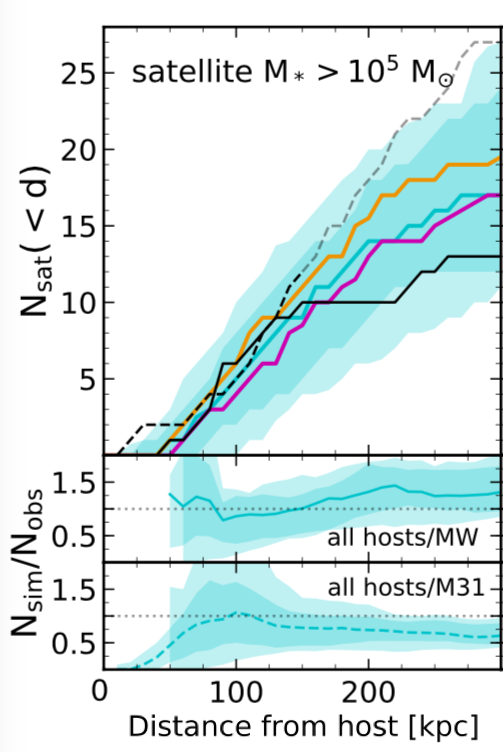
We are excited to announce the first student-led paper from our group, from PhD student Jenna Samuel: A profile in FIRE: resolving the radial distributions of satellite dwarf galaxies in the Local Group with simulations. Jenna examined the radial distance distribution of satellite galaxies around MW/M31-mass galaxies in our FIRE simulations, which she showed are consistent with the Local Group and with MW-like galaxies from the SAGA survey. Interestingly, more massive host galaxies have fewer satellites at small distances, because of tidal destruction from the host galaxy. Jenna also quantified the destruction of subhalos by comparing our baryonic simulations to their dark matter-only versions, finding 10x fewer subhalos within the inner 20 kpc. Finally, Jenna applied observational completeness within the LG to our simulations, predicting 2-10 more satellites with stellar mass > 1e5 Msun to be discovered around the MW and 6-9 around M31. Congratulations to Jenna for an excellent first paper!
Ananke: synthetic Gaia surveys
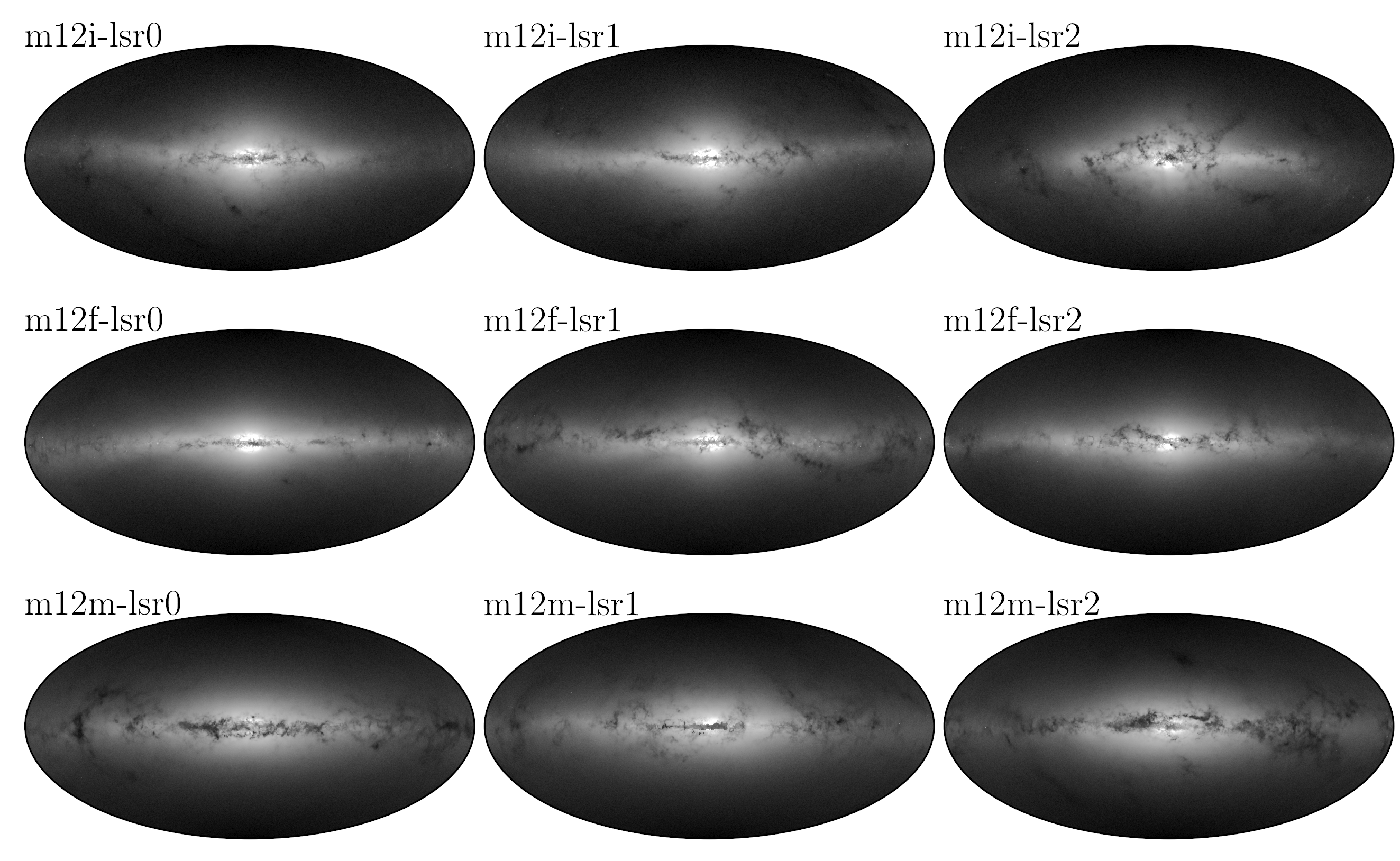
We are excited to announce the release of our synthetic Gaia DR2-like surveys from our Latte suite of FIRE-2 cosmological simulations of Milky Way-mass galaxies. We generated 9 synthetic surveys from 3 simulations, using 3 solar viewpoints per simulation. Along with these synthetic surveys, we also released the full simulation snapshots, including all particle data. All data is available at ananke.hub.yt, and the paper that describes our methods is Sanderson et al 2020.
Congratulations to Robyn Sanderson for leading this ambitious effort, including developing our new Ananke framework for generating synthetic surveys from baryonic simulations. Thanks to Kacper Kowalik and Matt Turk for help hosting this data via the awesome girder.hub.yt.
We hope that these cosmological synthetic Gaia DR2-like surveys will provide useful tools to the scientific community in interpreting the amazing data of the Milky Way from the Gaia space telescope.
